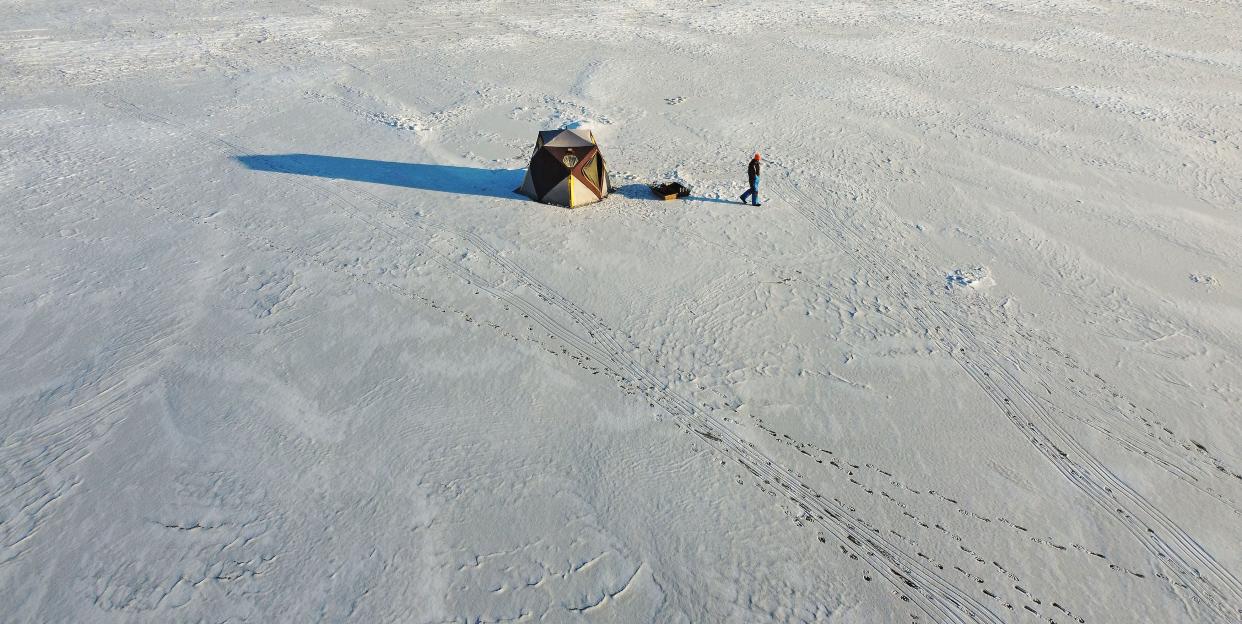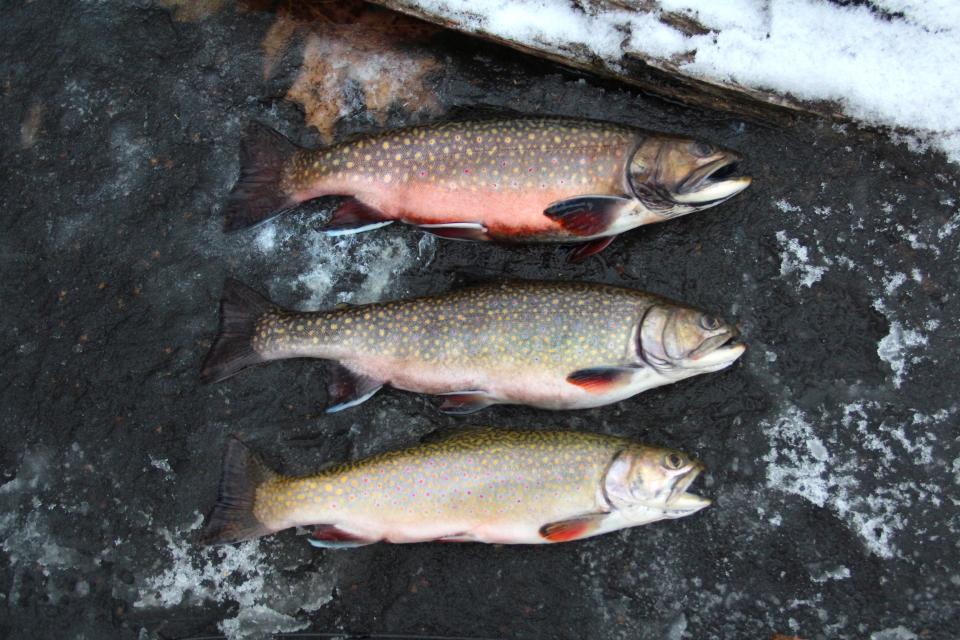Ice fishing season is underway, and safety should be considered before each trip

Ice fishing is a cold sport that can be both rewarding to the patient and dangerous for the inexperienced.
The most important aspect of ice fishing is using extreme caution, according to Nathan Kaufmann, the Ohio Department of Natural Resources wildlife officer assigned to Richland County.
News Journal subscribers make this coverage possible. Support our work and get a special offer of 6 months for just $1 ($9.99 a month after) at offers.mansfieldnewsjournal.com/specialoffer.
"No ice is safe ice," Kaufmann said. "There's no certain thickness."
Even those who think they know the conditions well should check the forecast regularly to be sure they aren't putting their lives in danger.
"Between today and tomorrow, who knows what the weather is going to do," Kaufmann said. "It's recommended to check every day what the weather is."
'Not a big group'
Recently, winter has become cold enough to allow anglers to safely cross the thick ice of local bodies of water.
The most popular ice fishing locations in North Central Ohio are Clear Fork Reservoir, Charles Mill Lake and Pleasant Hill Lake.
Those who drive by those lakes might see them speckled with ice shanties — also known as an ice shack, ice house or fishing shanty — which are similar to tents or small sheds and are commonplace when ice fishing.
Looking for answers: Family of slain Columbus mother of three seeks answers for December shooting on North Side
"They've got heaters in there," Kaufmann said. "They'll be out there pretty much every day that they can."
They're diehards, and there are far fewer of them than there are summertime anglers.
"A busy day, there might be 12 guys out there," Kaufmann said. "It's not a big group."
Ice fishing has its nuances
The principal of ice fishing remains the same as other types of fishing: lure a hungry fish to bite the hook.
Fish move much more slowly in the wintertime and are only interested in small meals that are more like snacks. Wax worms and other simple bait are common in the winter.
Since the warmest water is at the bottom of the lake during the winter, fish are deeper than in the summer. That's why ice anglers often will walk the lake with a fish finder before deciding where to start fishing.
Although it might seem like a totally different sport, Ohio's fishing laws are still enforced.
Fifre on Fifth Avenue: Madison Twp. fire chief carries elderly woman to safety after Fifth Avenue blaze
"The size limits and bag limits wherever still apply," Kaufmann said. "Everything else applies. You have to have your fishing license and all that good stuff."
There's a small section in the state's fishing regulations that addresses special ice fishing restrictions. The first explains cutting through the ice.
"The hole can only be 12 inches in diameter," Kaufmann said, noting disobeying that regulation is illegal and dangerous.
Another special winter law regulates use of "tip-ups," which the regulations define as "a device consisting of a hook and line attached to a spring or other device which is capable of raising a small flag or other signaling device when a fish is biting or is hooked."
Anglers can use as many as six tip-up and two regular fishing rods.
Follow a plan for your own safety
Experienced ice fishermen have developed a few safety tricks over the years that are best learned firsthand.
It mostly involves a float plan, a term borrowed from boating that involves leaving behind a detailed objective of the upcoming trip over the water.
"At least let someone know where you are," Kaufmann said. "It's one of those do-at-your-own-risk sports."
Food for birds: A Stroll Through the Garden: Feeding the birds all year
The best approach would be to ice fish in pairs, but that's not always possible.
"Fish kind of close to where someone else is fishing," Kaufmann said. "If one of you falls in, at least someone is aware of it."
Be sure to wrap cell phones in a sealable bag before the fishing trip so it will still be usable to call for help in case of a fall into the water.
It's advised life jackets are always worn and personal floatation devices kept nearby when ice fishing.
"A lot of these guys have fully body snow suits that actually are Coast Guard approved as flotation devices," Kaufmann said. "It looks like a snowmobile suit but it has a life jacket rating."
Plow crash on Turnpike: Snowplow damages 40 cars, causes several injuries on Ohio Turnpike
Getting familiar with the ice is an art only experienced ice anglers can teach. The best way to learn is to visit a lakeside during the winter and watch ice fishing in action.
"Get in touch with somebody who does it," Kaufmann said. "Learn from them and get that experience from them."
Ice fishing safety tips
Always fish with a partner or in an area with several other anglers present
Let others know exactly where you are going and when you plan to return
Place a cell phone in a plastic bag to protect it from moisture in case you get wet
Sprinkle sand around your feet for better traction on the ice
Take a PFD seat cushion and wear a life vest in case of an emergency
Avoid areas with feeder streams, springs, bridge pilings, docks and dam structures since ice is usually very thin there
If you fall into the water, remain calm
Slip your loose boots off to better tread water
Use ice awls to pull yourself out of the water
If no ice awls are available, call for help and try swimming out by letting your body rise up to firm ice and crawl out
Stay flat, distributing your weight on the ice
Keep your clothes on once out of the water to keep yourself insulated
If someone else falls in, reach with a stick or fishing pole, throw a rope or PFD, row or push a boat and call for help
ztuggle@gannett.com
419-564-3508
Twitter: @zachtuggle

This article originally appeared on Mansfield News Journal: Safety comes first when ice fishing this winter in North Central Ohio

